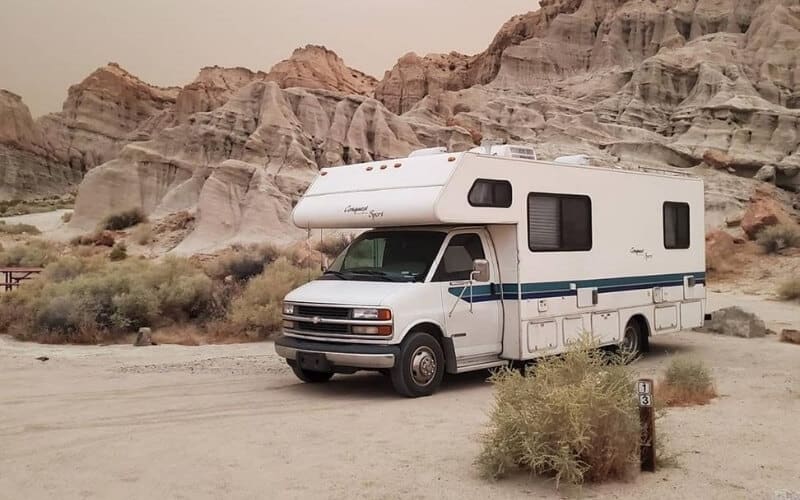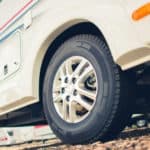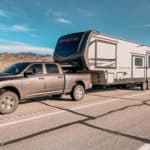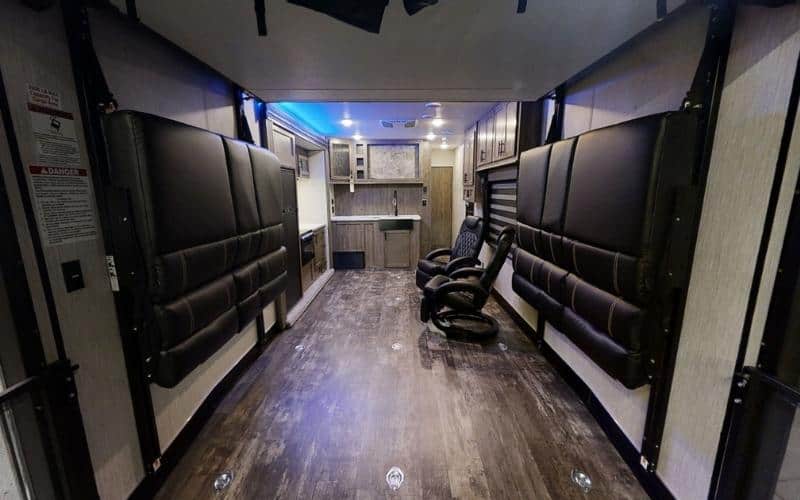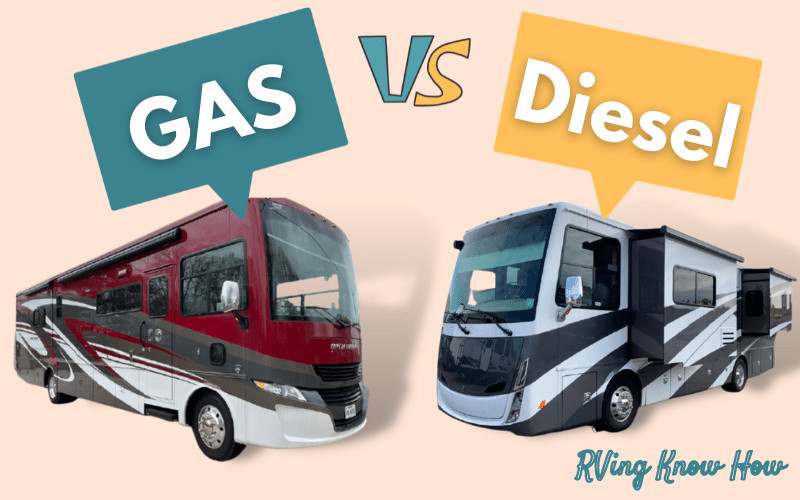The term RV or recreational vehicle is a little bit of a blanket phrase. It’s meant to describe a whole range of vehicles, trailers, and classic campers designed tor life on the great open road.
This includes three distinct classes of motorhomes, a wide range of fifth-wheel campers, travel trailers, toy haulers, popup campers, and teardrop campers.
If you’re thinking about taking the plunge and investing in an RV for the first time, then you might be wondering what type of RV is the easiest to drive?
Class B motorhomes are easiest RV to drive because driving them down the road is just like driving a big van with soft suspension. The handling is relatively responsive and they tend to be very easy to get a feeling for. They also tend to be easy to back up which is nice when you need to reverse into a tight campsite.
When it comes to towing a trailer or camper there’s a little room for debate. Especially if you haven’t already chosen your preferred tow vehicle.
With these driving forward and cornering isn’t all that hard, though large rigs can still be cumbersome.
The real issue becomes backing a large trailer into a campsite. Especially if the RV campground has a knack for packing units close together to maximize their rentable space.
To help you find the best type for you will take a look at the various types of RV and just how they handle going down the road as well as when you need to back it into your campsite.
Common RV Tow Vehicles
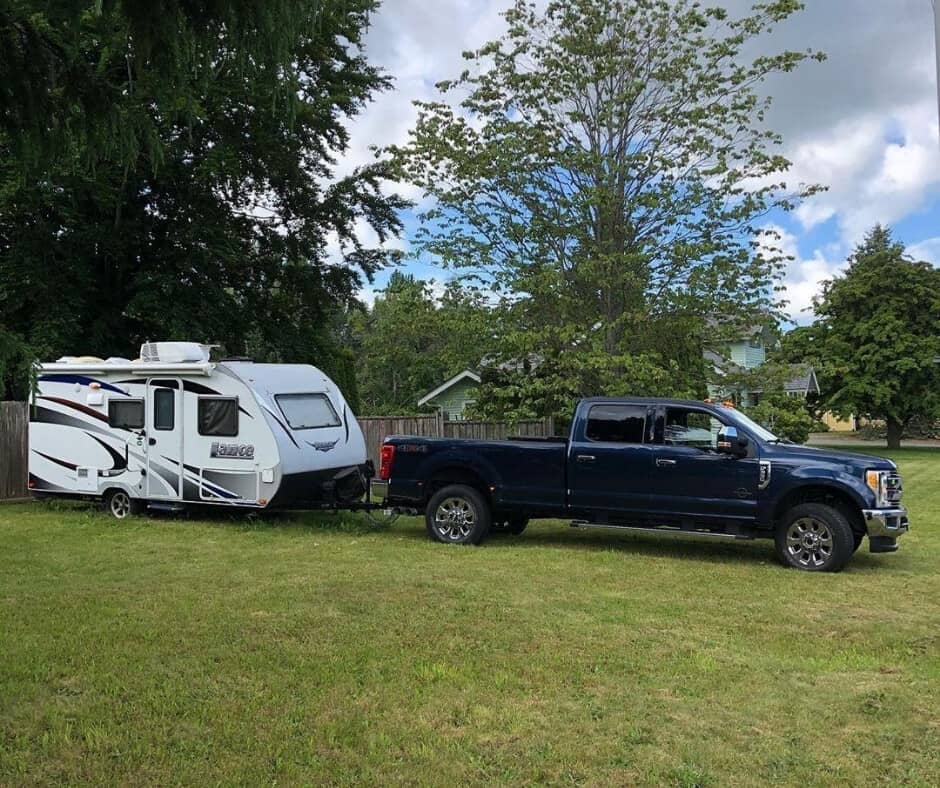
Before we turn the spotlight on the different types of RV, it’s probably worth a minute or two to consider the vehicles needed to tow them.
Even if you have a vehicle with a tow package you need to make sure it has the specifics to handle the RV you intend to tow.
This includes important things like payload capacity and towing capacity.
Mid-Size SUV
These are very popular daily driver vehicles that have a modest amount of towing capacity.
Though even with a robust tow package, they’re only really suited for towing popup campers, teardrop campers, and lightweight travel trailers.
Full-Size SUV
Many full-size SUVs share components and statistics with half-ton trucks from the same manufacturer.
Yet they still have the creature comforts you want in a daily driver. Though you will tradeoff some fuel efficiency compared to mid-size SUVs.
Some of the more robust full-size SUVs can tow midsize travel trailers and even small toy hauler campers.
Light Duty Pickup Trucks
This includes popular small trucks like the Ford Ranger, Chevrolet Colorado, Dodge Dakota, Toyota Tacoma, and the Nissan Frontier.
They tend to be on par with the towing capacity of a full-size SUV. Though they do have better payload capacity with the cargo box and often have superior rear suspension.
Half-Ton Pickup Trucks
This class of vehicles represents a full step-up from SUVs and light-duty pickup trucks.
This includes things like the Ford F-150, the Chevrolet Silverado, the GMC Sierra, Dodge Ram, Toyota Tundra and the Nissan Titan.
They have the towing and payload capacity to handle up to large travel trailers and loaded toy haulers, but there’s only perhaps a handful of fifth-wheel trailers that they can tow confidently.
Three-Quarter & One-Ton Pickup Trucks
Here again, we see a significant step up in towing capacity and especially payload capacity.
Not to mention most three-quarter and one-ton pickup trucks have powerful diesel engines as well as a little more fuel-efficient than their smaller half-ton little brothers.
It translates into the commanding power to tow fifth-wheel trailers.
Understanding The Different Types Of RVs
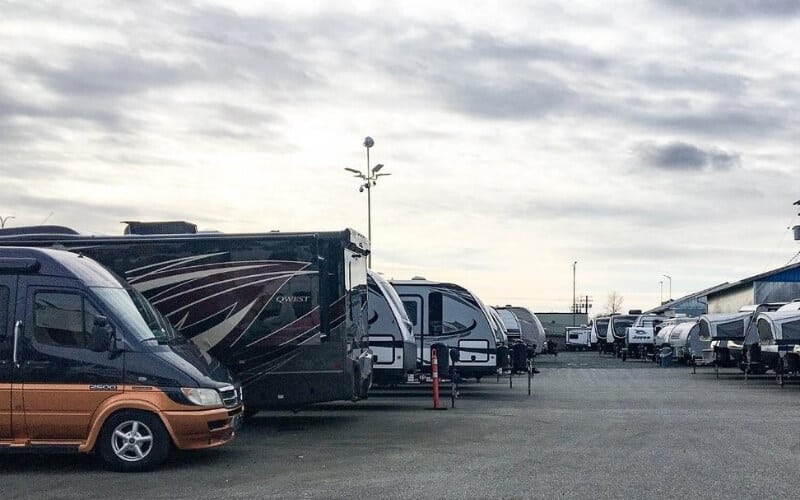
There are several different types and classes of RV to consider. The RV that’s best for you will depend on the space you want, as well as your budget, and how you plan to RV adventure. The following is a quick breakdown of your options.
Motorhomes
When motorhomes first burst onto the RV scene, they were incredibly popular. It is essentially a tow vehicle and a camper married together in one.
The problem is that once you get to your destination if you want to take a trip to town or simply explore the surrounding attractions, you have to break down camp.
While some have fuel-efficient diesel engines, you will still burn a lot of fuel. There are also three distinct classes of motorhome, determined largely by the size and weight.
Class A Motorhome
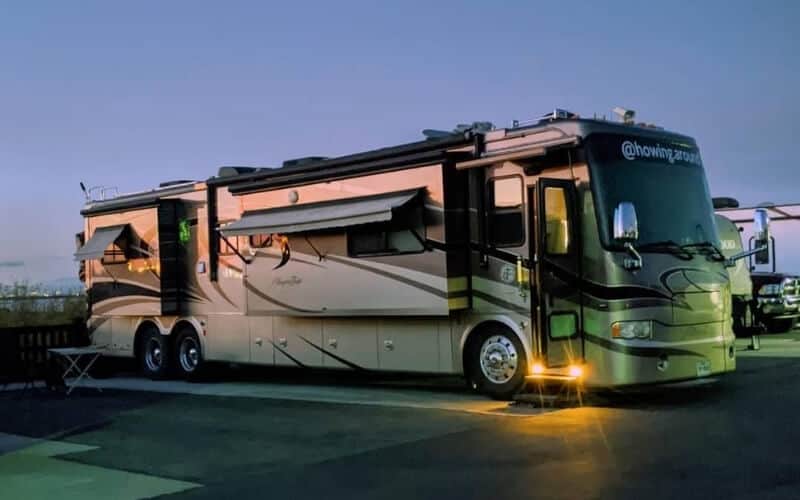
The Class A motorhome is the largest of all the SUVs. Depending on where you live and drive, you might need to get a special driver’s license endorsement to drive legally drive it on the road.
The large RVs can range from as little as 25 feet long to as much as 45 feet long. They tend to weigh between 12,000 to 30,000 pounds.
On the large end of the spectrum, a Class A motorhome will have a lot of the amenities of home.
This includes a full kitchen, large bathroom, master suite, multiple beds, and even hookups for a stackable washer and dryer. Luxury Class A motorhomes might even have a jacuzzi tub
Unfortunately, the tradeoff of all the comfort and luxury of the Class A motorhome is that it’s a lumbering beast that’s difficult to drive and often requires a spotter to back it into a tight campsite.
Some states even require you to have a special driver’s license endorsement for long or excessively heavy Class A motorhomes.
Another issue you will run into with a Class A motorhome is that every time you want to see something in the area, you have to completely break camp to then drive the large motorhome from Point A to Point B.
It’s the sort of thing that makes you bemoan even a simple run to the store for a bag of ice, and turns a mid-week trip to the RV dump station into a major pain in the neck.
The way a lot of Class A motorhome owners deal with this is to bring a second vehicle along for the journey.
Whether it’s a mid-size SUV or a sedan, it gives you a runabout vehicle to tour the surrounding attractions while the motorhome stays back at camp.
Of course, some Class A motorhomes are powerful enough that they can tow a can or small SUV behind them on the road.
Class B Motorhome
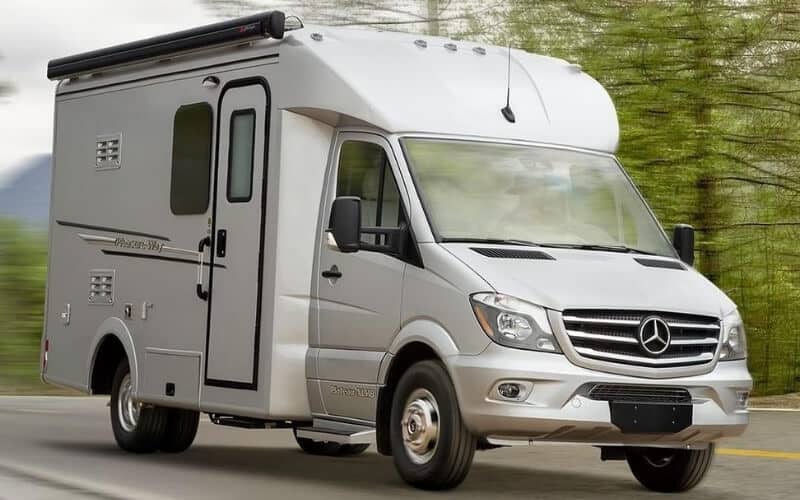
There is a lot of variability to the term Class B motorhome. Some are essentially a robust camper van, while others are much smaller versions of a Class A or Class C motorhome.
The van models tend to be relatively easy to drive, and have incredibly soft suspension, which translates into handling that feels like you’re driving a king-size bed.
Class B motorhomes can weigh as much as 9,000-pounds and be up to 23-feet long on the large end of the scale to as light as 4,000-pounds and 17-feet long on the small end.
While they certainly aren’t as spacious as a Class A motorhome and most have a sparse bathroom facility, they are a good option for a small family who likes to travel and doesn’t want to bring a secondary vehicle with them just to tour the surroundings.
Class C Motorhome
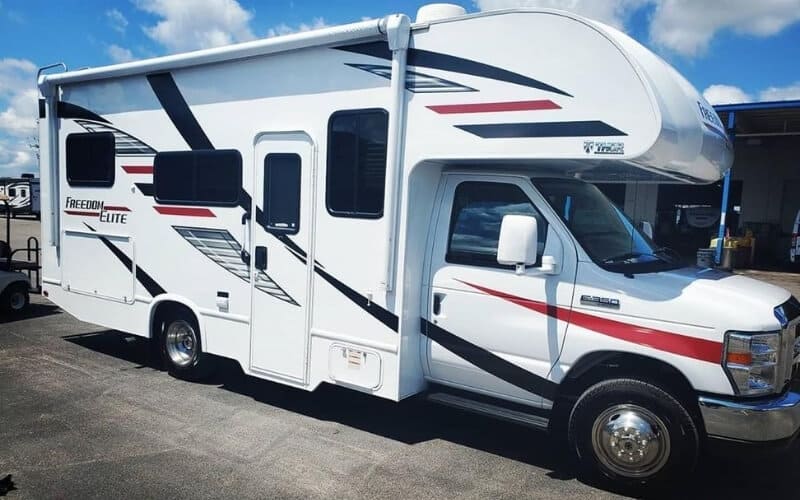
This class of motorhome tends to give you a taste of the luxury and space of a Class A motorhome, yet ironically tend to be larger than Class B motorhomes.
They tend to have their own separate master bedroom space with a modest kitchen and bathroom.
Class C motorhomes range between 21 to 28-feet long and can weigh anywhere from 10,000 to 13,000-pounds.
They tend to be more maneuverable on city streets than a Class A motorhome, and can still handle things like narrow mountain roads or bumpy forest back roads.
Visibility is also poor when backing up, as Class C motorhomes sometimes have insufficient mirrors, or require you to purchase aftermarket mirror extensions.
Here again, the trade-off is that with a Class C motorhome, you need to break camp every time you want to go somewhere.
At the same time, most lack the sufficient torque and payload capacity to tow a second vehicle behind them.
So, if you do want some sort of runabout vehicle, you’ll have to have someone drive it separately, or perhaps rent a car for the week when you get to your destination.
Class C RVs are a mid-range option featuring luxuries of a Class A RV. Their length can be up to 21-28 feet long and weigh around 10,000-12,000 pounds.
Class C also includes king-size beds, separate washroom, and dining areas; however, they are not as spacious as Class A RVs.
Fifth-Wheel Trailers & Campers
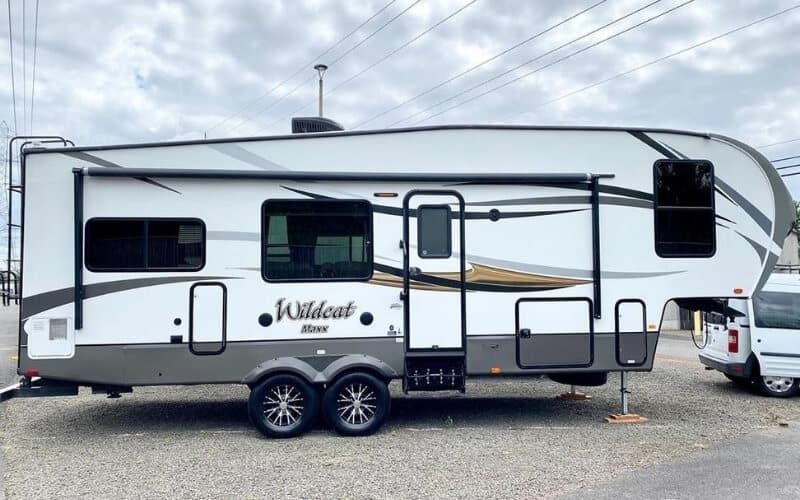
Fifth-wheel trailers and campers help answer the motorhome problem of not having a separate vehicle to get around when you get to where you’re going.
Yet most of the larger, “Luxury” models can stand shoulder to shoulder with a Class A motorhome.
The tradeoff here is that you most likely will need a three-quarter or one-ton pickup to tow most fifth-wheel campers.
You will also need a special type of hitch permanently installed into the cargo box of the truck, which further increases the cost of ownership.
Ultimately, fifth-wheel trailers tend to be more popular with construction workers and farmers who already use powerful trucks to tow fifth-wheel equipment trailers on the typical Monday thru Friday job.
Assuming you already have a vehicle that’s powerful enough to tow it, and the proper hitch installed in the cargo box, a fifth-wheel trailer is relatively easy to tow.
Though there might be a jarring motion when you first set off as kingpins and hitch components bear the force of towing such a heavy load.
At that point, driving down the highway is relatively easy. While you might need to be careful making sharp corners, most fifth-wheel trailers are easy enough to turn.
It’s backing up and positioning a fifth-wheel trailer that can be a major challenge.
They tend to be longer and while they are less likely to jackknife compared to a travel trailer, fifth-wheels are none-the-less cumbersome, and inexperienced drivers can be prone to over-correcting when driving in reverse.
Travel Trailers & Toy Haulers
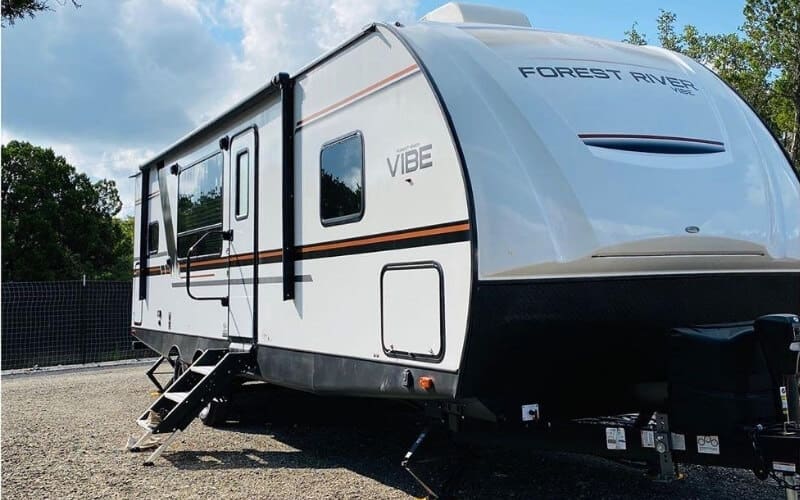
Travel trailers can range in size. Some of the larger ones can measure in at over 30-feet and weigh well over 12,000-pounds.
These big boys are kissing cousins of fifth-wheel trailers and might need a three-quarter-ton truck to tow them safely.
Yet the smaller end of the travel trailer range might only measure as short as 12 to 14-feet and might only have a gross vehicle weight rating of 5,000-pounds.
These can be towed by a full-size SUV, light-duty pickup truck, or even a powerful mid-size SUV with a robust towing package like the Ford Explorer.
As you might imagine the larger travel trailers have a lot of the same reversing issues as a fifth-wheel camper.
Unfortunately, they are also more prone to jackknifing and over correcting.
So, if you are new to the art and science of reversing a trailer, you might want to invest in a secondary backup assist camera or at least recruit a second set of eyes to help you maneuver it into a tight camping spot.
With travel trailers on the smaller end of the spectrum reversing them might not be as hard as you’re dealing with a shorter wheelbase and better tracking.
Yet they can also be prone to accidental overcorrection from a relatively new trailer driver, which can increase the risk of a catastrophic jackknifing incident.
Regardless of what range of the travel trailer spectrum you are towing, the biggest worry when traveling at highway speeds is “Trailer Sway.”
This is a condition that’s often due to towing a load that’s near the maximum capacity of the tow vehicle, or imbalanced cargo loaded into the trailer.
Left unchecked even a modest trailer sway problem at highway speeds can cause a catastrophic accident.
So, be smart about how you load your gear, and try to never tow within 20% of your vehicle’s maximum towing capacity.
Toy Haulers
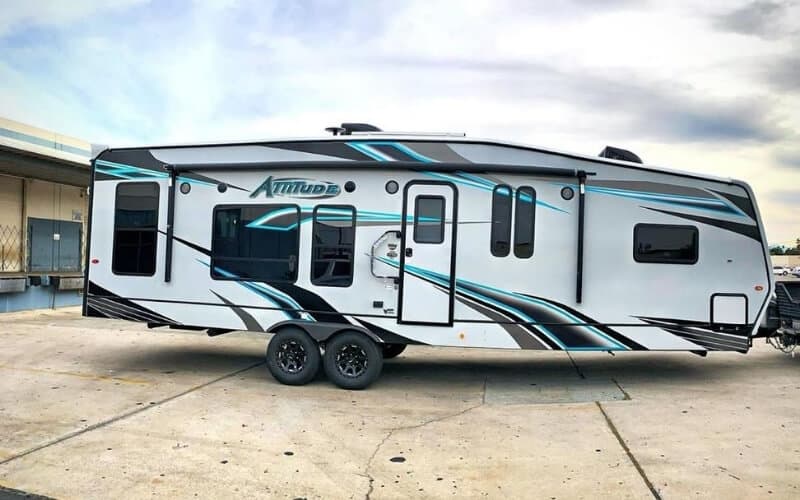
A Toy Hauler falls under the travel trailer umbrella, in that it is a camper with a traditional tongue that connects to a bumper-pull hitch.
With a toy hauler, a portion of the interior space is sacrificed to make room for a cargo bay for holding things like ATVs, a UTV, motorcycles, dirt bikes, or snow machines.
When you get to your destination, you can then unload the “Toys” out of the cargo bay to enjoy as you see fit.
A lot of toy hauler travel trailers also let you convert the cargo bay into a living area or a porch.
The weight of the toys in the cargo bay can make a big difference in how the trailer handles. Especially when you’re traveling at highway speeds.
If you meet or exceed the maximum payload capacity of your toy hauler trailer, or your tow vehicle isn’t as robust as it needs to be, you could be a significant risk for a dangerous trailer sway incident. Especially at speeds over 55 miles per hour.
With this in mind, a toy hauler with a full load really should be towed by a three-quarter-ton or one-ton pickup truck.
Though you might be able to do it with a half-ton pickup truck with a robust tow package installed at its trim level.
Teardrop Campers
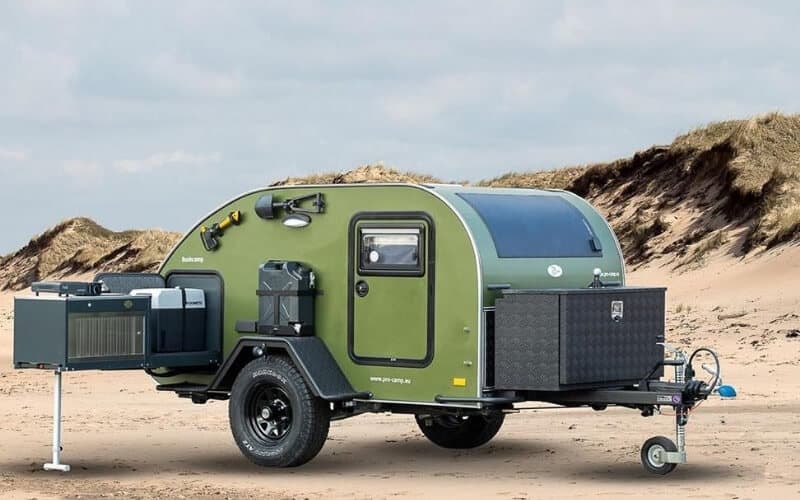
These are the plucky little brothers of the more robust travel trailer. While some people lump them into the travel trailer umbrella, they do sort of deserve their own consideration.
Most are light enough that even a light-duty pickup truck or a mid-size SUV can tow them with confidence.
While some are little more than a bedroom on wheels, there are a few with a modest bathroom and a respectable kitchen.
The shape of the teardrop camper also makes it very aerodynamic which makes them pull smoother than a travel trailer of a similar size or weight.
They also tend to track nicely behind the tow vehicle, following you smoothly through even tight corners.
When it comes to backing a teardrop camper, the narrow tongue and short tongue length tend to make them prone to jackknifing when you back reverse.
This is more of an issue if you are inexperienced at backing up a trailer and you are prone to overcorrecting.
Though most teardrop campers tend to be low and somewhat narrow, so it’s easy to see around and over them when backing into a tight camping spot.
Popup Campers
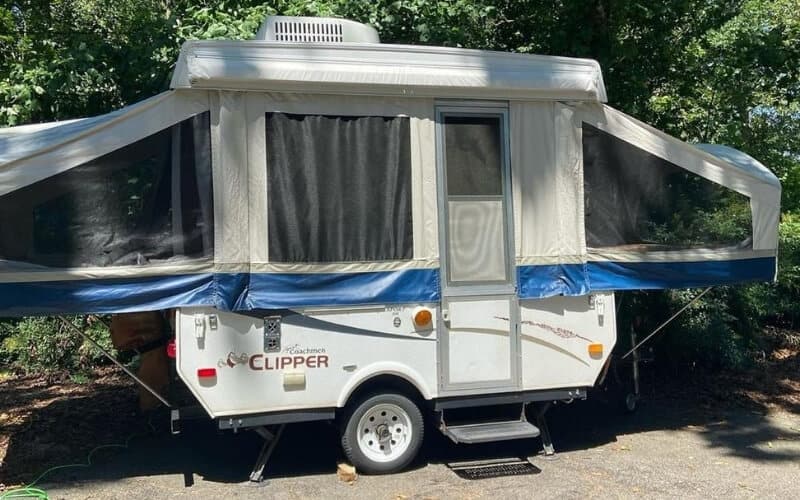
The humble popup camper has managed to maintain it’s popularity for decades thanks to its low weight which makes it easy to tow.
Mid-size SUVs, sedans, and even small SUVs are easy contenders to tow a popup camper.
Many people also appreciate the low profile that makes it easy to see where you’re going when you’re backing up.
Like a lot of trailers with a short tongue and often narrow wheelbase, you have to worry about overcorrecting and accidentally jackknifing the trailer when reversing.
Though when driving forward popup campers tend to track nicely in the same wheel pattern as their tow vehicle.
When you get to your destination and back it into place the popup camper’s compact travel case expands to offer a copious amount of sleeping space.
Though they don’t tend to have a lot of payload capacity for storing gear. The silver lining is that popup campers are then less prone to trailer sway problems.
Does Weather Impact RV Handling?
This depends on the type of RV. In the case of a large Class A or Class C motorhome, a strong side wind or straight-line storm winds can have a catastrophic effect on the handling.
You should heed wind warnings for high or wide profile vehicles. Fifth-wheel campers and travel trailers can also be affected by strong side winds, though a robust tow vehicle can usually pull them through to safety until the storm passes.
Do I Need A Special Driver’s License Endorsement To Operate An RV?
In most states, travel trailers, teardrop campers, popup campers, and Class B motorhomes have no special license requirements. In a few states, the largest of Class C Motorhomes may require a special driver’s license endorsement.
It’s Class A motorhomes and large fifth-wheel trailers that typically face the most scrutiny when it comes to special driver’s license requirements.
This is a state by state regulation. So, you might want to do some research in advance to see if your state, and possibly other states you will frequently travel to have special license requirements for Class A motorhomes and fifth-wheel trailers.
You might end up needing a class A or commercial driver’s license to legally operate them on public roads and highways.
What Are The Biggest Challenges When Driving An RV?
Several factors can play into how challenging an RV is to drive or operate. With some, there are a few driving habits you can adopt, yet with others,it’s just something you have to learn to live with.
RV Size & Weight
Outside of small travel trailers, teardrop campers, and popup campers, the biggest challenge with driving an RV is that they tend to be large.
They’re a veritable campsite or small apartment on wheels. This calls for far more exaggerated turns, needing to take wider circles, and making sure that you aren’t a nuisance to other motorists.
Adding to this is the fact that all the weight makes them exceedingly slow to accelerate.
This means you’ll need to give yourself a lot of open space when doing something as simple as taking a left turn across a divided highway.
You’ll also need to put your foot to the floor when merging into traffic at highway speeds.
Reversing
Unless you’re lucky and you happen to get a pull-through or U shaped campsite, then chances are you will have to back your motorhome, trailer, or camper into its space.
Unfortunately, a lot of RV parks try to pack units into as much space as possible.
This ultimately means that most of the time you will be backing your already cumbersome RV into or out of its spot a lot.
This problem is compounded by the fact that most side mirrors on trucks and other tow vehicles are rarely wide enough to give you a clear view.
Not to mention that other than small teardrop campers and popup campers, most towable trailers will completely block up your rearview mirror.
In most motorhomes, there simply isn’t a back window to look out of. To deal with this, you could invest in an aftermarket backup camera.
Especially if you are going to be traveling alone. Though most RV travelers have at least one person, if not their whole family in-tow, which is great for times when you need a spotter to help guide you into a campsite.
Just make sure everyone is on the same page when it comes to communicating with the same terms. When someone says “Left Hand Down” everyone knows that that means.
After all backing into a tight space with everyone else in the campground watching you is hardly a time to get creative with metaphors!
Braking Distance
Being large and heavy also translates into the need for increased braking distance.
This can be a very stressful moment when you have to drive in tight traffic and someone pulls in front of you suddenly.
If you live in an urban area and you’ve had more than a few white-knuckle driving experiences in rush hour traffic with your RV, you might want to slightly adjust your schedule.
Sometimes setting off very early in the morning or after the evening rush hour will give you the freedom to drive on unclogged roads.
This issue is compounded for heavy travel trailers and large fifth-wheel campers. So, if you are going to go with a large trailer, you want to look to make sure that it has an electronic braking assist system.
This is a special wiring harness that connects to a braking controller in the cab of the tow vehicle. It coordinates the brakes on the trailer with the brakes on the pickup truck or full-size SUV.
Not only does an electronic braking assist system spare you from having the trailer push you around, but it also reduces long-term stress on the tongue of the trailer and the hitch of the tow vehicle.
Are There Things I Can Do To Be A Better RV Driver?
Just like anything, “Practice Makes Perfect.” Most of the people who tell you stories about catastrophic RV incidents simply jumped behind the wheel and assumed they were a natural at it.
Just like when you were 15 years old and your Dad took you to the mall parking lot on a Sunday morning, you are going to want to give yourself time to a feel for the size, visibility, and handling of your RV.
While you’re at it, maybe put out some cones or some folding chairs and practice backing up.
How Can I Prevent Trailer Sway?
Trailer sway is one of the most dangerous things that can befall your travel trailer or teardrop camper.
When you are driving you might not immediately notice the trailer starting to fishtail behind you.
It might just feel like a mildly unsettled motion in the rear of your tow vehicle.
If you can notice signs of trailer sway in either of your side mirrors, it is a red flag sign that you have a serious problem and you need to slow down.
Of course, the best way to deal with trailer sway is to prevent it from happening in the first place. This includes things like:
- Keep the total weight of cargo in the trailer to 60% of the rated payload capacity.
- Load cargo thoughtfully, keeping more of the weight in the front half of the trailer or centered over the wheels.
- Avoid overloading the tow vehicle.
- Keep your speed under 55 miles per hour.
How Do I Deal With Trailer Sway?
For many people, the knee-jerk reaction is to slam on the brakes when they notice their trailer swaying behind them.
However, this can have a severe impact on the tow vehicle’s handling. Instead, you should try the following steps:
- Step 1: Remove your foot from the accelerator pedal.
- Step 2: Activate your hazard lights if necessary. Especially if you are on a highway.
- Step 3: Hold the steering wheel as straight as possible while the entire rig slows down.
- Step 4: Decelerate by at least 10 to 15 miles per hour.
- Step 5: Pull over at the earliest possible convenience and reload the trailer with more of the cargo toward the tongue. In a severe case, you may need to leave some items behind
Conclusion
There are a lot of different types of RVs to consider. Each has its own pros and cons that can affect the overall handling and performance on the road.
A Class B motorhome tends to be the most intuitive to drive on the road, as some are little more than over-grown camper vans.
Yet they’re not for everyone, especially large families. Ultimately, if you are going to invest in a motorhome, be prepared for it to handle like a lumbering bus.
Give yourself ample time to accelerate and brake, as well as making sure to pay attention to the weather advisories.
If you find a travel trailer, fifth-wheel, or teardrop camper more appealing, make sure that you are pairing it with the right tow vehicle.
Then also be prepared to give yourself the time and space you need for accelerating and braking.
Loading it properly will also go a long way toward preventing trailer sway as well as improving the overall handling.

